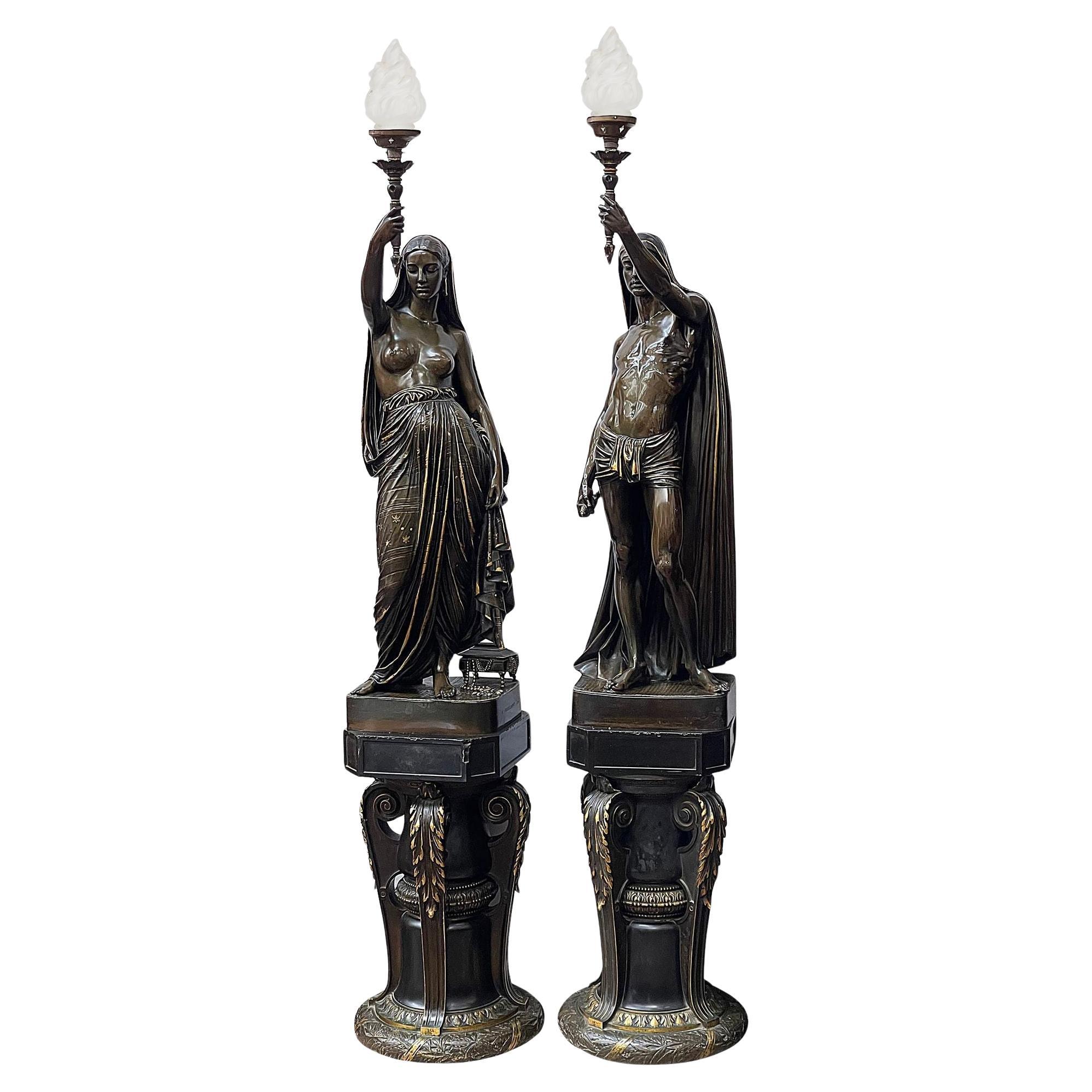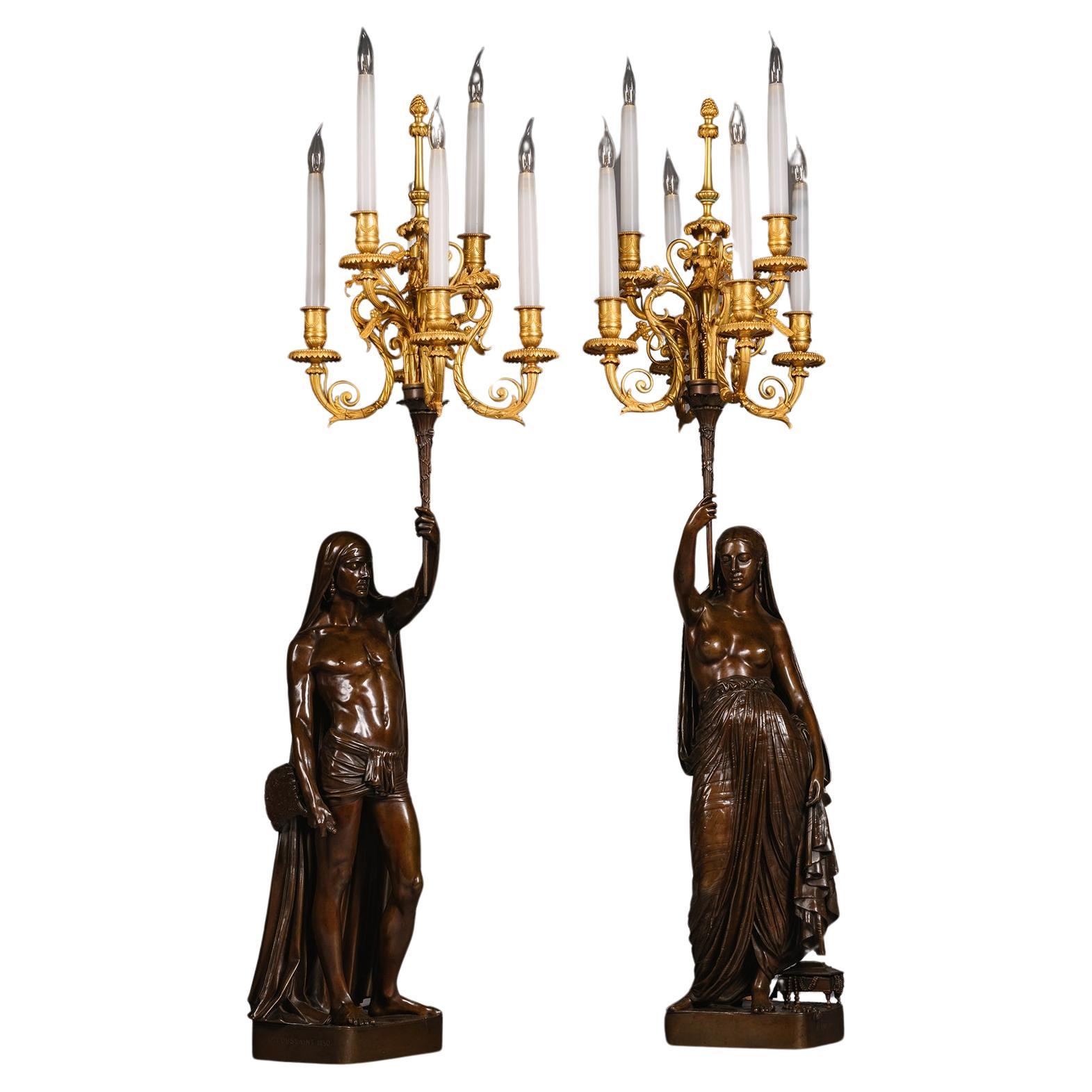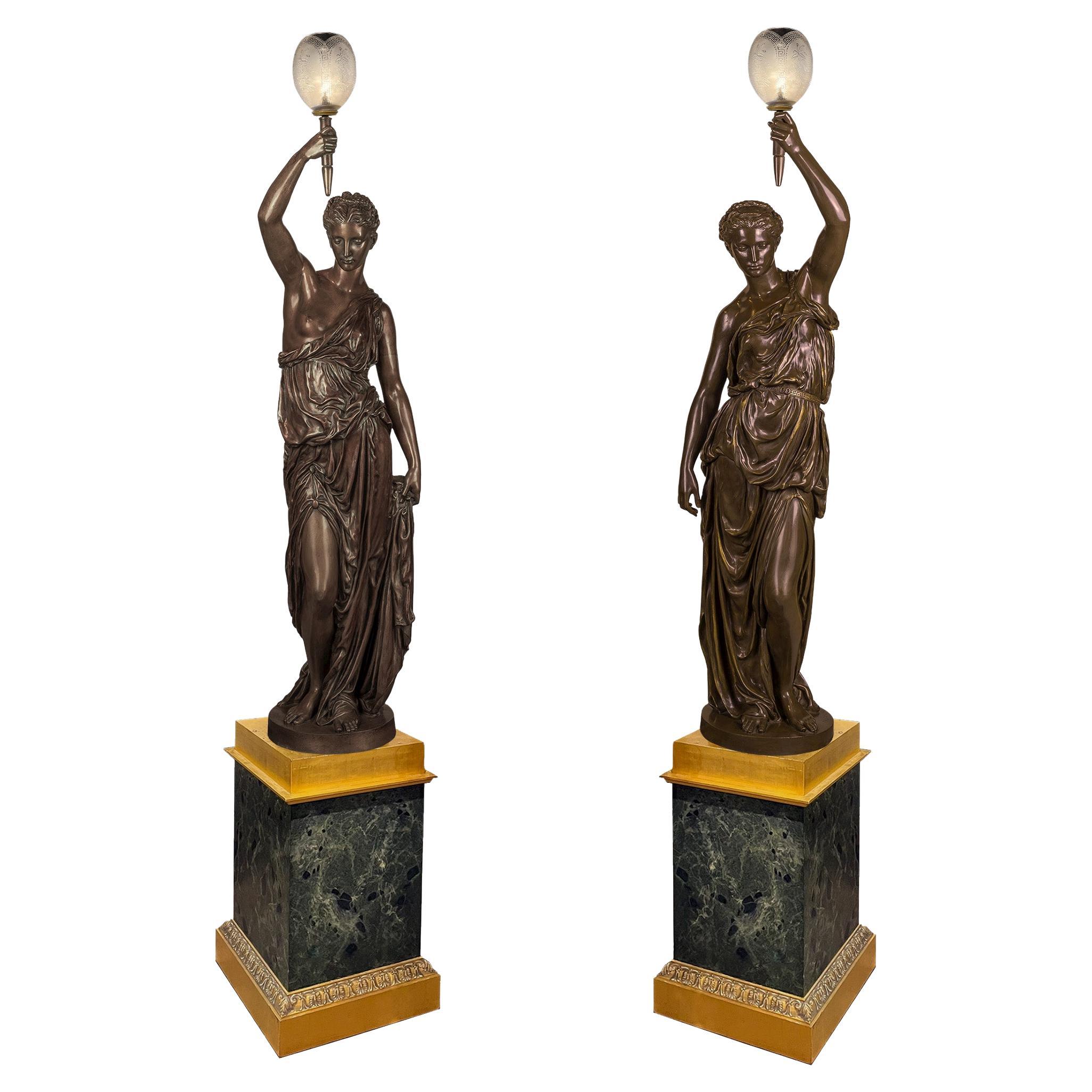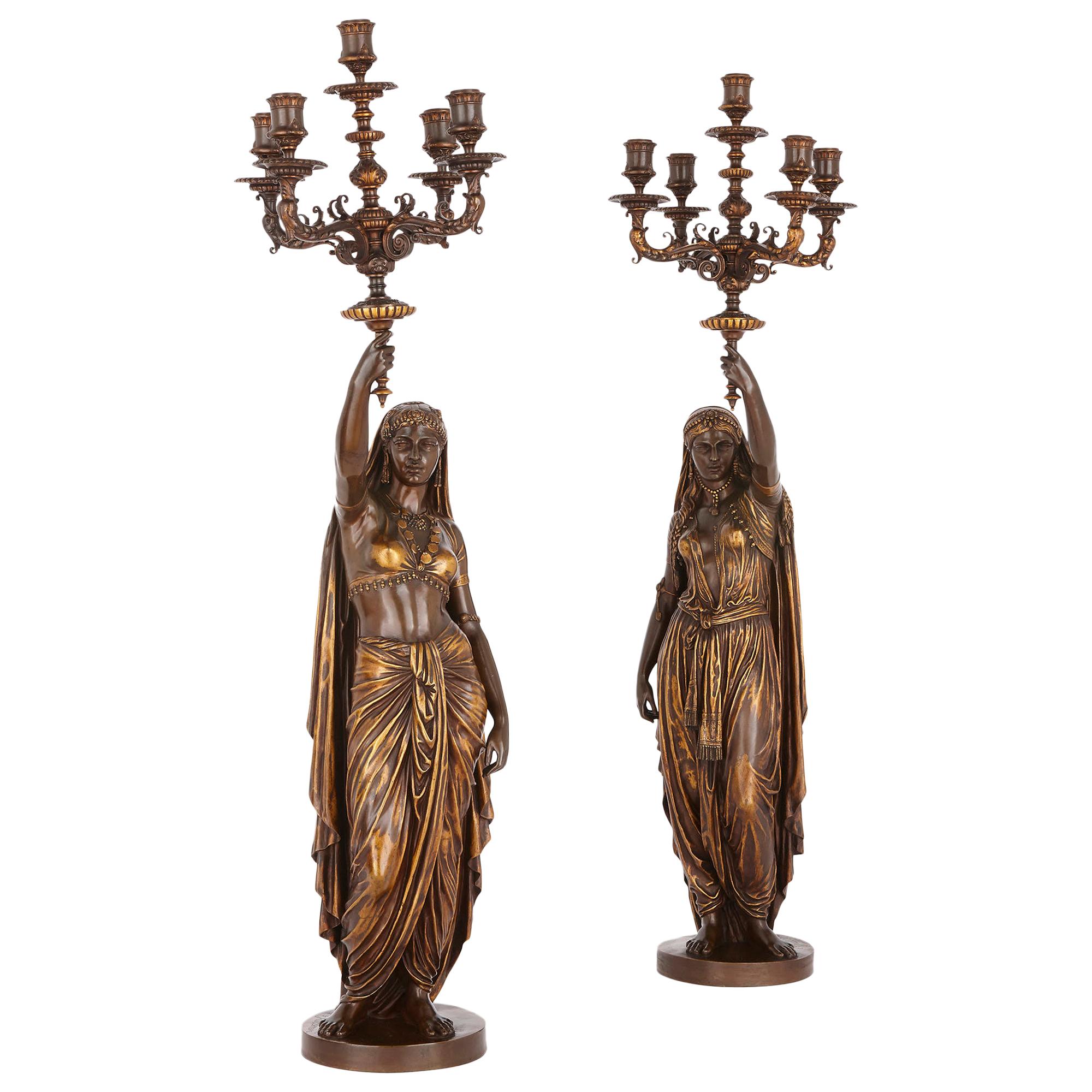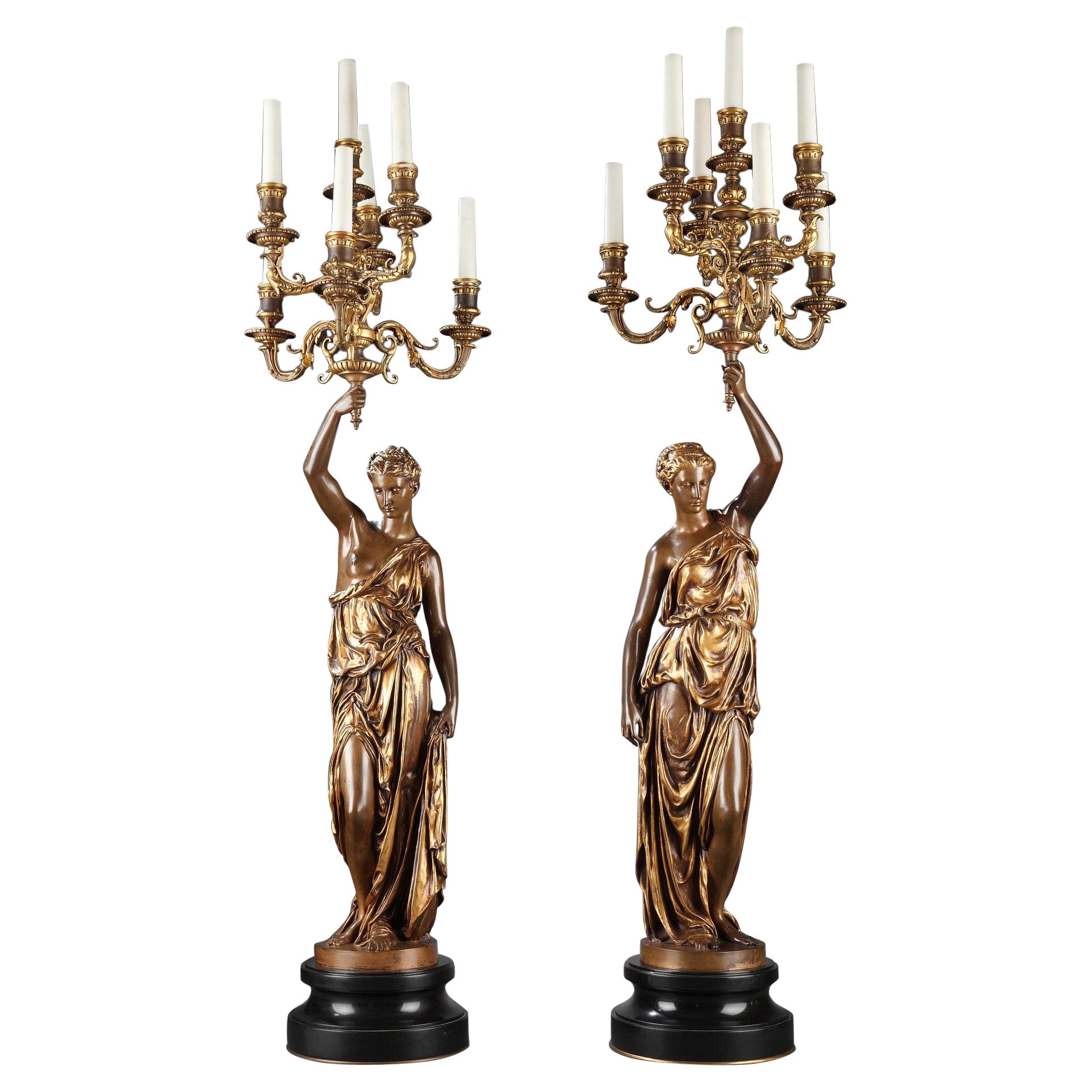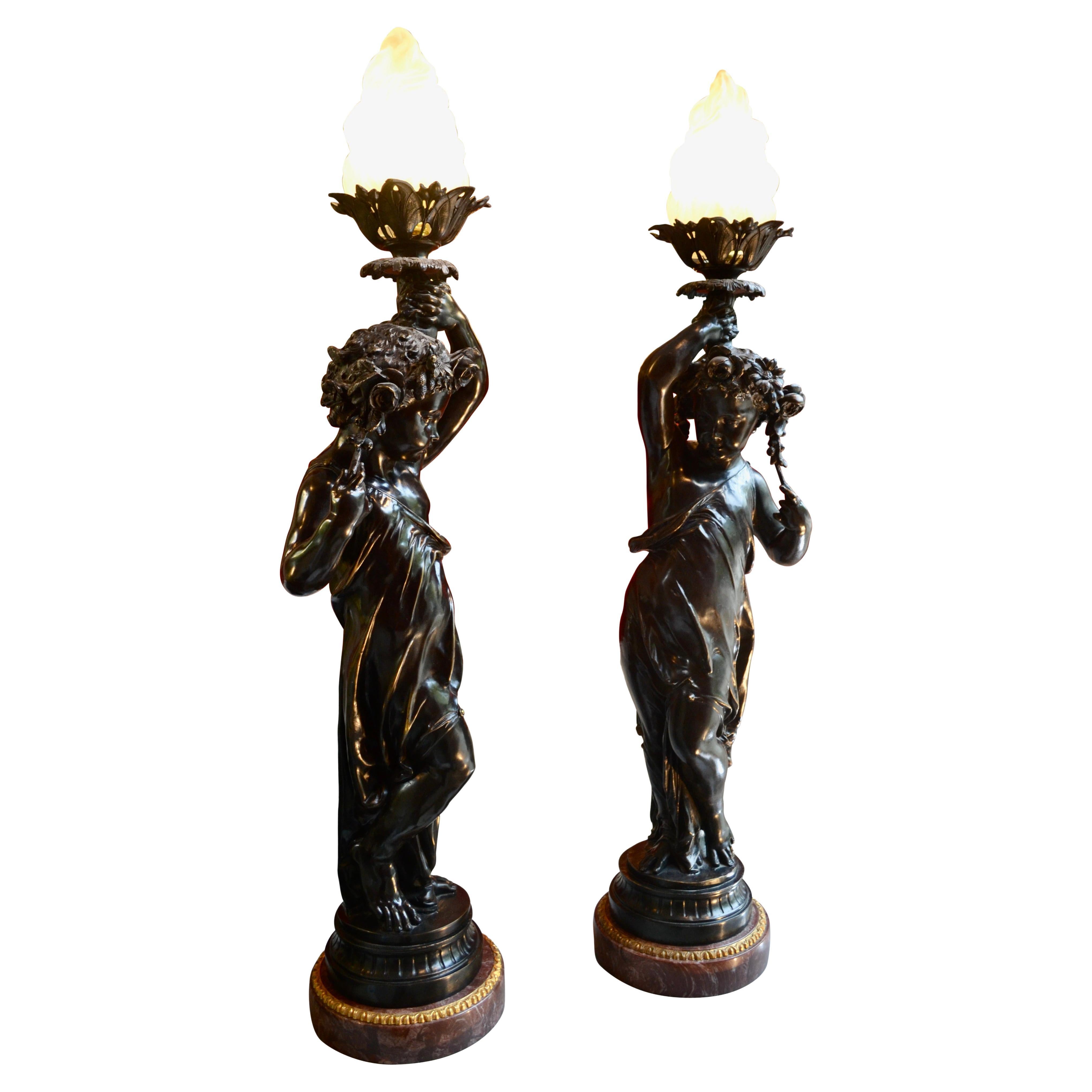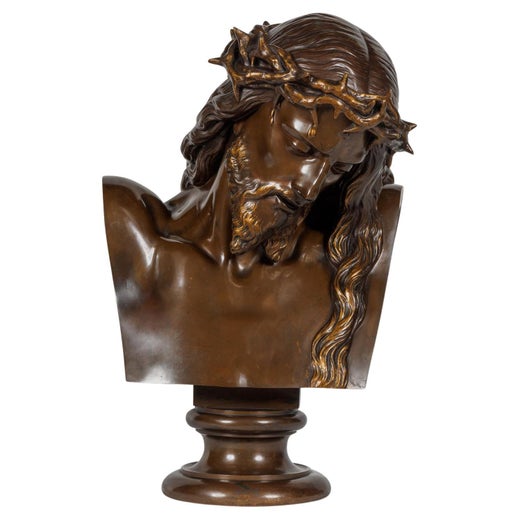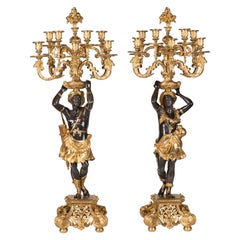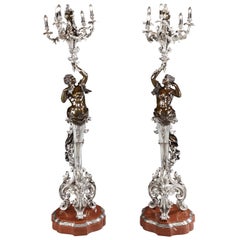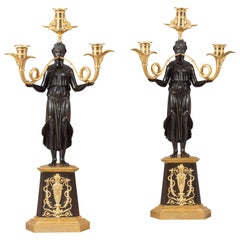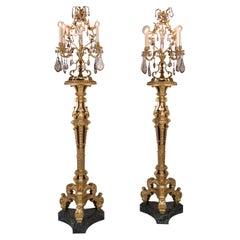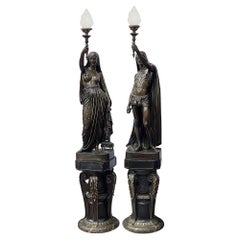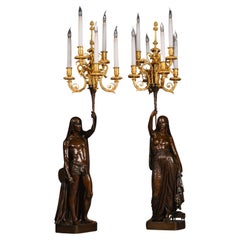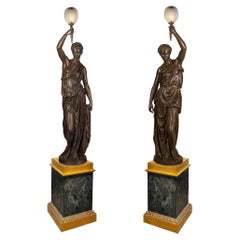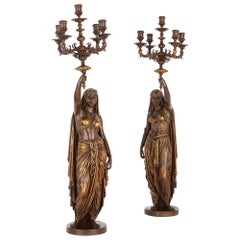Large 19th Century Pair of Bronze Figural Torcheres
About the Item
- Creator:A. Toussaint - G. Chaudoir (Artist),Ferdinand Barbedienne (Maker)
- Dimensions:Height: 47.5 in (120.65 cm)Width: 13.5 in (34.29 cm)Depth: 10.5 in (26.67 cm)
- Sold As:Set of 2
- Style:Romantic (Of the Period)
- Materials and Techniques:Bronze,Cast
- Place of Origin:
- Period:
- Date of Manufacture:circa 1860
- Condition:Repaired: Each item has undergone careful inspection and restoration by a conservation specialist in order to guarantee the original quality and integrity of the object. Wear consistent with age and use. Fully electrified & in working condition.
- Seller Location:London, GB
- Reference Number:Seller: 89631stDibs: LU954711763241
Ferdinand Barbedienne
Founded by one-time Parisian wallpaper dealer Ferdinand Barbedienne and engineer Achille Collas, one of the most revered foundries in 19th-century France began with the invention of a revolutionary 1830s-era device that could produce proportional reproductions — large or small — of sculptures. Collas’s machine, which yielded miniature likenesses of antiquities for the interiors of homes the world over, was pivotal to the success of the F. Barbedienne Foundry. The successful firm earned prestigious awards and critical acclaim and created exquisite bronze candleholders, clocks and lamps for a range of wealthy and prominent clients.
The duo first launched their company under the name Société Collas et Barbedienne, and early on, they optimized chemical processes for pigmenting and patinating their bronze statuettes. After Collas died in 1859, Barbedienne forged on alone, and the company’s name changed to simply F. Barbedienne.
Barbedienne employed more than 300 workers at that point, and the Maison created a range of furnishings and decorative objects that featured the integration of marble and ormolu accents. However, with the onset of the Franco-Prussian War of 1870, the foundry was forced to retrofit its molds, and the production of cannons replaced sculptures, furniture and vases.
When Ferdinand Barbedienne passed away in 1891, his nephew and heir, Gustave Leblanc, took over as president, changing the name to Leblanc-Barbedienne. Leblanc expanded production into Germany, the United Kingdom and the United States, carrying on the company's legacy with monumental sculptures, and models and securing production rights for famous statues. Paul-Alexandre Dumas, an Art Nouveau maker and student of Louis Majorelle, succeeded Leblanc until the company's closing in 1952.
Barbedienne pieces had been exhibited regularly in the 19th century and were especially prevalent at Europe’s international expositions and world’s fairs, where they received numerous prizes. Today, the Musée d’Orsay in Paris holds dozens of Barbedienne works in its collection, including intricate mirrors, vases and cups created by Louis-Constant Sévin at the foundry. For more than two decades, Sévin created lamps, boxes and more at Maison Barbedienne. Working alongside award-winning chaser Désiré Attarge, Sévin designed Napoleon III-era works that greatly appealed to European nobility.
Other notable artists who collaborated with Barbedienne included Eugene Aizelin, Emmanuel Fremiet, Antonin Mercié, Emile Guillemin, Edouard Lievre, Ferdinand Levillain and Auguste Rodin.
On 1stDibs, find a collection of antique Ferdinand Barbedienne decorative objects, lighting and more.
- ShippingRetrieving quote...Shipping from: London, United Kingdom
- Return Policy
More From This Seller
View AllAntique 19th Century French Candelabras
Bronze, Ormolu
Antique 19th Century French Louis XV Floor Lamps
Marble, Bronze
Antique Early 19th Century French Empire Candelabras
Bronze, Ormolu
Antique 19th Century English Baroque Revival Floor Lamps
Crystal, Ormolu
Antique 19th Century French Candelabras
Marble, Ormolu
Antique 19th Century French Restauration Candelabras
Ormolu
You May Also Like
Antique Mid-19th Century French Abstract Sculptures
Bronze
Antique 19th Century French Table Lamps
Bronze
Antique Late 19th Century French Renaissance Floor Lamps
Bronze
Antique Late 19th Century French Neoclassical Candelabras
Bronze
Antique 1860s French More Lighting
Bronze
Antique Late 19th Century French Napoleon III Floor Lamps
Bronze
